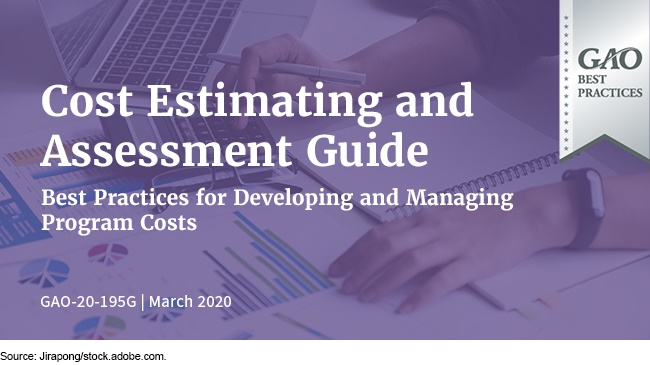Cost Estimating and Assessment Guide: Best Practices for Developing and Managing Program Costs
Fast Facts
Legislators, government officials, and the public want to know whether government programs are achieving their goals and what their costs are. To make these kinds of evaluations of the latest ship, IT system, or other acquisition, reliable cost forecasts and updates are required.
We developed this guide, initially published in 2009, to provide agencies across the government with a way to produce reliable, high quality cost estimates. It outlines key steps in the estimating process.
This is our first update to the guide. It includes improved descriptions of cost estimating steps, additional technical information, and an updated format.

The Cost Estimating and Assessment Guide is also available in a digital format.
Highlights
Why GAO Did This Study
To use public funds effectively, the government must employ effective management practices and processes, including the measurement of government program performance. In addition, legislators, government officials, and the public want to know whether government programs are achieving their goals and what their program costs are. The U.S. Government Accountability Office (GAO) has shown that in order to conduct oversight of the federal government, including agencies’ stewardship of public funds, reliable cost information is required. We originally developed this guide in order to establish a consistent methodology based on best practices that can be used across the federal government for developing, managing, and evaluating program cost estimates. The Cost Estimating and Assessment Guide presents the best practices associated with developing a reliable, high-quality cost estimate and the best practices associated with effective management of program cost through the use of earned value management (EVM). Use of these best practices should enable government programs to better estimate and manage their costs to improve program management and execution.
Developing reliable cost estimates is crucial for realistic program planning, budgeting and management. While some agency guidelines on cost estimating are thorough, other agency guidance is limited regarding processes, procedures, and practices for ensuring reliable cost estimates. The Cost Guide is intended to address that gap. The guide outlines key steps in the cost estimating process: the purpose, scope, and schedule of a cost estimate; a technical baseline description; a work breakdown structure; ground rules and assumptions; data collection; estimating methodologies; sensitivity and risk analysis; documenting and presenting results; and updating estimates with actual costs. The guide also includes information on earned value management; the composition of a competent cost estimating team; software cost estimating; and best practices for an analysis of alternatives. Additionally, the guide addresses auditing and validating cost estimates.
Throughout the guide, we refer primarily to cost estimates that encompass major system acquisitions, although the best practices in the guide are equally applicable to capital and non-capital project cost estimates. Since its initial publication in 2009, we have applied the cost estimating best practices as auditing criteria to a myriad of capital and non-capital programs. These criteria are not limited to large-scale, non-real estate programs such as weapons systems, spacecraft, aircraft carriers, and software systems. We have applied the cost estimation practices in past work involving communications networks, the decennial census, high speed rail projects, and federal construction and maintenance projects. The practices are also applicable to government in-house development efforts for which a cost estimate must be developed to support a budget request.
We revised the 2009 version of the Cost Guide to better describe the alignment of best practices, cost estimate characteristics, and cost estimating steps; clarify some of the best practices and their related criteria; to provide additional content in technical appendices; to update case studies and references to legislation and rules, and to modernize the guide’s format and graphics.
For more information, contact Brian Bothwell at (202) 512-6888 or bothwellb@gao.gov.
